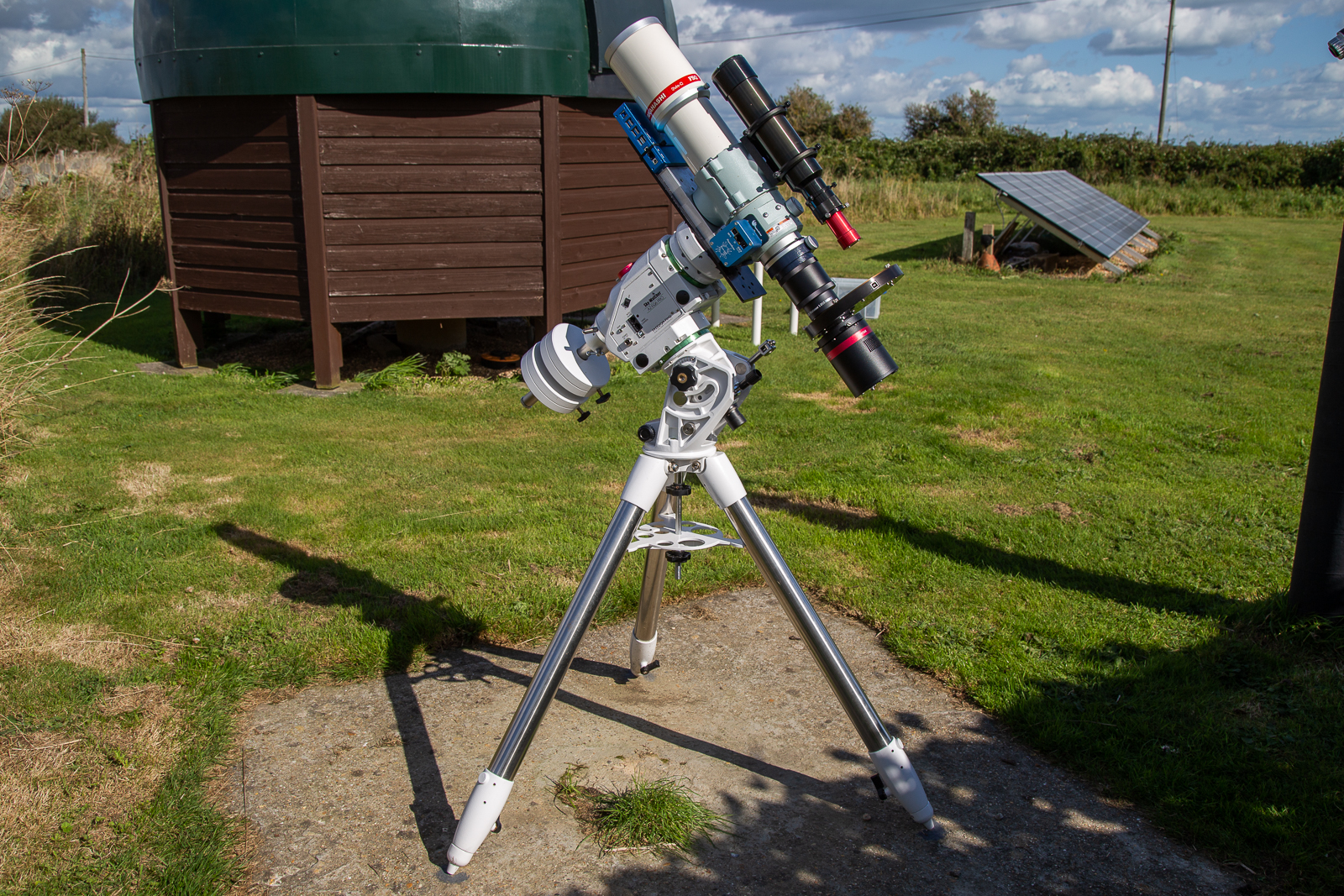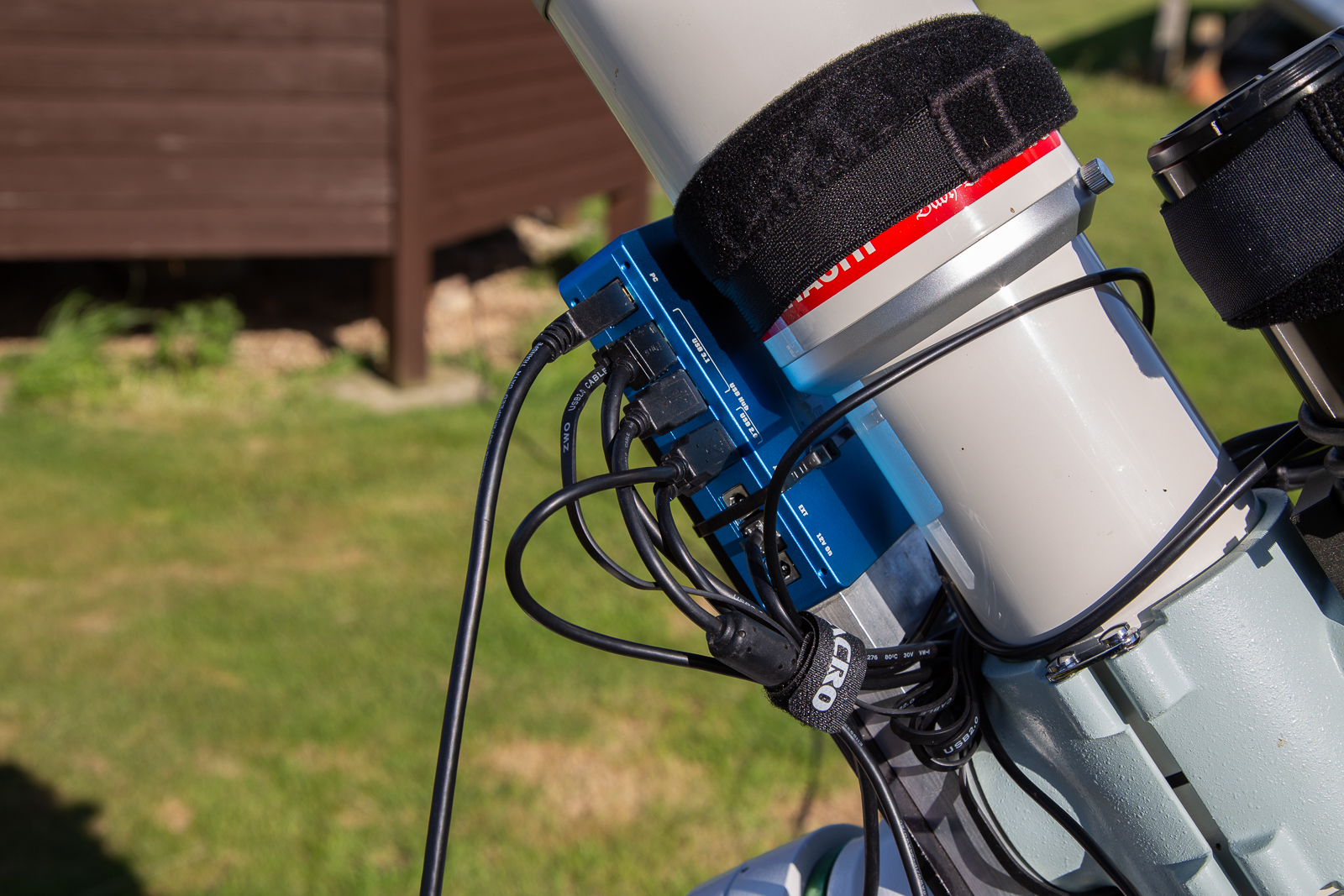Since the early Summer of 2021 I have been building up a new deep-sky imaging setup based around the beautiful and venerable Takahashi FSQ-85EDX Refracting telescope. I’ve always wanted a ‘Tak’ and decided to go for this model known ad the ‘Baby-Q’. The optics are glorious and the focuser is incredibly rugged and can carry heavy cameras and filter wheels.
The idea, eventually, is to turn this setup into a fully robotic system which will be mounted low to the ground and housed in a simple box-like structure with a sliding roof. For now, I’m testing out the system to see how it performs.
Here is a small gallery of photos of the current system. I will add more details about the components below.
Here’s a list of the main components that you can see in the above photos:
- Telescope: Takahashi FSQ-85EDX F/5.3 Apochromatic Refractor with 1.01x field flattener.
- Mount: Skywatcher AZ-EQ6 Pro
- Camera: QHY268C cooled CMOS camera (one-shot colour, full 16-bit)
- Filter Wheel: Starlight Xpress 5 x 2″ filter wheel
- Guide Scope: ZWO 60mm. Focal length is 280mm, F/4.67
- Guide Camera: ZWO ASI290MM Mini mono
- Auto Focuser: Pegasus Astro FocusCube2
- Power, Dew Heater and USB Hub: Pegasus Ultimate Powerbox V2
- Dew Heater bands on both scopes
- Windows Computer: Beelink Mini PC (in the plastic box on the ground running N.I.N.A.)
If you look at the photos with all the cabling, you will see a plastic box on the ground below the mount. This contains a ‘headless’ mini PC running Windows 10. Think of an Intel NUC and you will get the idea, but this is a Beelink with an Intel i5 CPU which comes cheaper than a NUC. This computer has all of the software installed to control the rig. I’m using the free N.I.N.A. software here and the little PC is connected to the wireless router I have in my dome just a few feet away. This allows me to use remote desktop from the comfort of my dome, office or house.
The thing that really was a ‘game-changer’ for me is the Pegasus Powerbox which is mounted just below the lens of the main scope. This provides all of the 12-volt power ports I need to run the various bits of kit and also has a USB hub with 6 ports. Additionally it can power and control the heat of three heater bands and can detect the dew-point so that it can intelligently adjust the power to the bands to keep the lenses free from dew. Because nearly everything connects to this hub, there are only two cables that need to be connected to the big plastic box on the ground. One is the 12V power to the hub and the other is the USB3 port to the Beelink mini PC.
I run the amazing free N.I.N.A (Nightime Imaging ‘N’ Astronomy) software on the mini PC and the recently added Advanced Scheduler is amazing allowing me to power up the system before dark and set up various targets to image during the night. The system will do everything such as cooling the camera, auto-focusing, slewing and centring targets, flipping across the meridian and shutting down at dawn. It can also deal with re-focusing during the night if the focus drifts and re-centring after a cloudy spell.
Assuming I get some clear nights over the Autumn months, I will hopefully be posting some new images soon.








